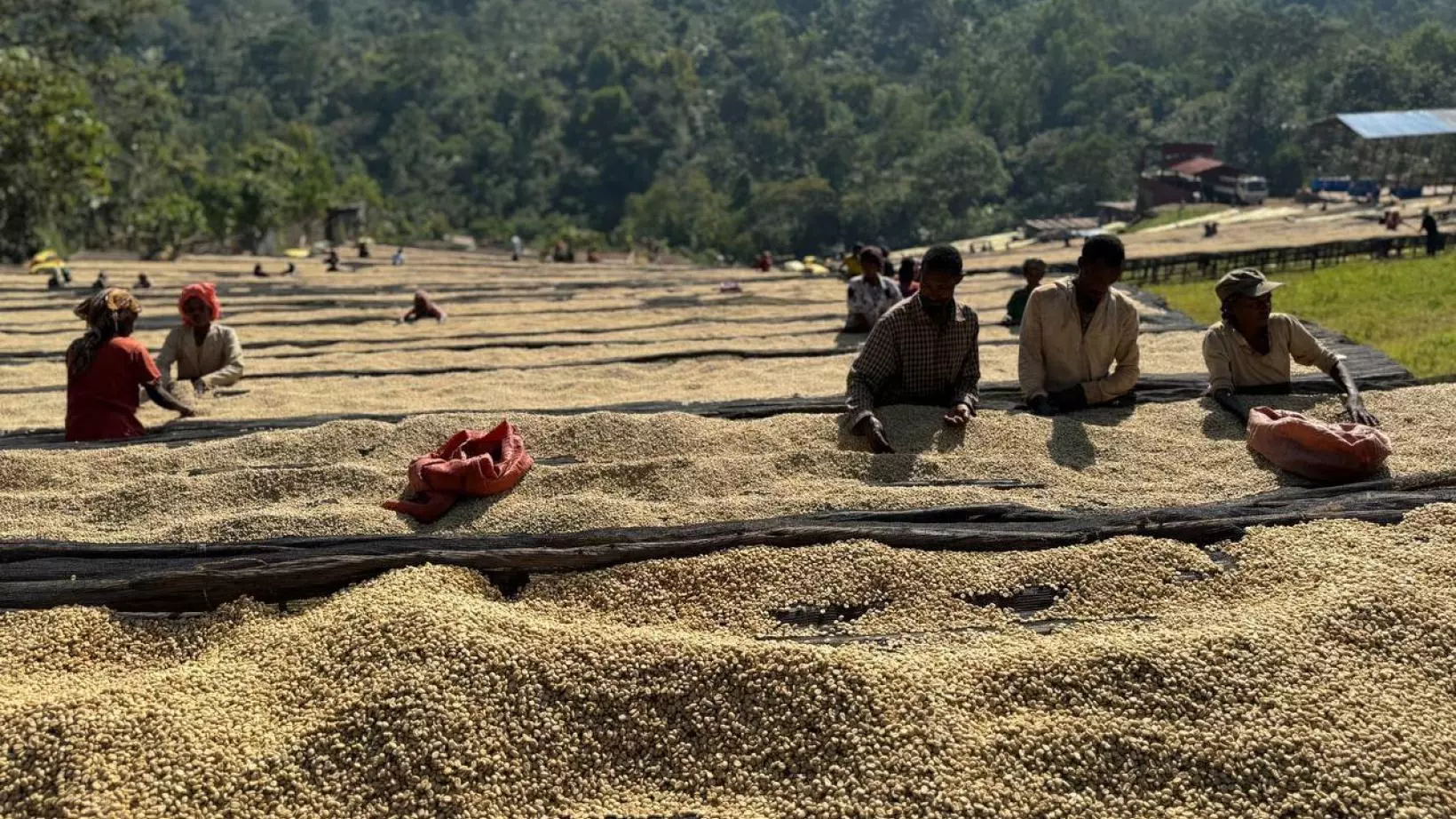Rising temperatures and changing rainfall patterns are disrupting Ethiopia's coffee production. This critical export crop faces geographic shifts, increased pests, and declining yields.
Authors
Seneshaw Tamru
Senior Country Economist, Ethiopia, International Growth Centre
Bart Minten
Senior Research Fellow, and Representative, Country Programmes, International Food Policy Research Institute
Woubet Kassa
Economist, World Bank
Renowned for producing some of the world's highest-quality Arabica coffee beans, Ethiopia is the world’s fifth largest and Africa’s largest coffee producer. The livelihoods of 15-20 million Ethiopians are directly tied to coffee production. Coffee is Ethiopia’s most important export commodity, frequently accounting for over 25% of merchandise exports despite recent fluctuations in its contribution to exports. In 2021-22, it represented 35% of such exports.
The specific Arabica varieties grown in Ethiopia are highly sensitive to climate change. Warming, increased variability in precipitation and extreme weather events pose significant threats to this vital sector (see USDA, 2022; Jaramillo et al., 2009; DaMatta et al., 2018; Coffee Barometer, 2023). Even minor shifts in weather patterns can lead to lower yields, compromised bean quality (resulting in bitter or poorly flavoured coffee), and a reduction in land suitable for coffee cultivation (see Coffee Barometer, 2023; IPCC, 2022; DaMatta et al., 2019). The vulnerability of coffee production to climate change is further compounded by the fact that it is primarily undertaken by smallholder farmers with limited resources and knowledge to adapt to changing weather patterns.
Climate change reshaping coffee growing areas
The impact of climate change on coffee production are multifaceted ranging from diminishing suitable land, increased prevalence of pests, reduced quality, and indirectly through biodiversity loss. Rising temperatures and erratic rainfall patterns affect coffee production through two primary channels.
Warmer temperatures and increased humidity shorten the incubation periods for pathogens, leading to a higher prevalence of pests and diseases that directly impact coffee production and productivity. Extreme precipitation is linked to severe outbreaks of coffee rusts.
The optimal conditions for cultivating Arabica coffee include annual temperatures of 18-22°C and annual precipitation of 1400-2000 mm. Current production belts may become too warm, while new areas at higher altitudes may become suitable. This necessitates a transition for farmers who have traditionally relied on coffee for their livelihoods, as well as the acquisition of new knowledge and skills related to coffee cultivation, management, and marketing by potential farmers in newly suitable areas. However, the often-higher transition or adjustment costs would hinder these shifts or at least make it difficult.

